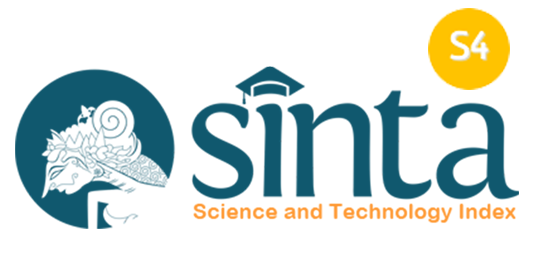LITERATURE REVIEW: REDUCING DYSMENORRHEA IN TEENAGER BY DRINKING TAMARIND TURMERIC WATER
Downloads
Introduction: Menstruation is a sign of sexual development in adolescent girls. Abdominal cramps are one of the most common problems experienced by teenage girls during menstruation. Abdominal cramps occur due to the pulling of smooth muscles in the uterus which is usually followed by migraines, abdominal pain, weakness and excruciating pain. The average incidence of menstrual pain or dysmenorrhea in the world shows that more than 50% percent of women experience primary dysmenorrhea in Indonesia reaching 64. 25% with the category of 89% primary dysmenorrhea and 9.36% secondary dysmenorrhea. The purpose of this study is to examine scientific articles which discusses the reduction of menstrual pain in adolescents. Methods: The method used in this study is a literature review with data collection techniques using the Google Scholar, Pubmed, and e-resources database based on inclusion criteria, among others, the intervention in the form of giving sour turmeric stew, using the quasi experiment or pre experimental design or literature review method, using indonesian and english, published within 10 years (2011-2021). Respondents are teenagers who experience dysmenorrhea. Journals are accessible to the public. Results: The results showed that based on the study conducted, it can be seen that turmeric acid drink can reduce menstrual pain levels in adolescent girls because sour turmeric drinks contain curcumin and anthocyanins which are analgesics and antipyretics that function as pain relievers. Conclusions: So it is expected that young women consume traditional drinks, namely sour turmeric drinks when experiencing menstrual pain to reduce the pain they feel.
Amelia, S., Juwita, F., & Fajriyah, A. (2020). Pengaruh Pemberian Kunyit Asam terhadap Intensitas Nyeri Haid. Indonesian Journal of Midwifery (IJM), 3(2), 143–150.
Anugrahhayyu, C. A., Darsini, N., & Sa’adi, A. (2019). Minuman Kedelai (Glycine max) dan Kombinasi Asam Jawa (Tamarindus indica) dengan Kunyit (Curcuma domestica) dalam Mengurangi Nyeri Haid. Jurnal Farmasi Dan Ilmu Kefarmasian Indonesia, 5(1), 1.
https://doi.org/10.20473/jfiki.v5i12018.1-5 Anurogo, S., & Wulandari, A. (2011). Cara Jitu
Mengatasi Nyeri Haid. Penerbit Andi.
Baiti, C. N., Astriana, A., Evrianasari, N., & (2021). Kunyit Asam Mengurangi Nyeri Haid Pada Remaja Putri. JKM (Jurnal Kebidanan Malahayati). 7(2), 222-228. Doi : 10.33024/jkm.v7i2.1785
Eswi, A., Helal, H., & Elarousy, W. (2012). Menstrual Attitude and Knowledge among Egyptian Female Adolescents. Journal of American Science, 8(6).
Fanaei, H., Khayat, S., Kasaeian, A., & Javadimehr, M. (2016). Effect of curcumin on serum brain-derived neurotrophic factor levels in women with premenstrual syndrome: A randomized, doubleblind, placebo-controlled trial. Neuropeptides, 56, 5–31.
Hamdayani, D. (2018). Pengaruh Pemberian Minuman Kunyit Asam Terhadap Penurunan Dismenore Primer Pada Mahasiswi Tingkat Ii Prodi S1 Keperawatan Stikes Mercubaktijaya Padang. Menara Ilmu, XII(80), 24–29. https://doi.org/10.33559/mi.v12i80.619
Kasim, V. N. A. (2017). Haid Pada Siswi Di Sma Negeri 3 Gorontalo Utara.
Jurnal Health and Sport, 8(2), 1–15.
Marlina, E. (2012). Pengaruh MinumanKunyit Asam Terhadap TingkatNyeri Dismenorea Primer Padaremaja Putri di SMA Negeri 1 Tanjung Mutiara Kabupaten Agam. Retrieved October 10, 2021, from http://repo.unand.ac.id/id/eprint/166
Nurwana, N., Sabilu, Y., & Fachlevy, A. (2017). Analisis Faktor Yang Berhubungan Dengan Kejadian Disminorea Pada Remaja Putri Di Sma Negeri 8 Kendari Tahun 2016. Jurnal Ilmiah Mahasiswa Kesehatan Masyarakat Unsyiah, 2(6), 185630.
Pursell, E., & N. McRae. (2020). How to Perform a Systematic Literature Review: A Guide for Healthcare Researchers, Practitioners and Students. Springer Berlin Heidelberg.
Purwaningsih, wahyu, & fatmawati, siti. (2010). Asuhan keperawatan maternitas. Nuha Medika.
Ria, M. B., Ola, C. Y. I., & Palalangan, D. (2020). Difference in Effectiveness of Warm Ginger Water Compress and Sour Turmeric on Reducing Primary Menstrual Pain in Midwifery Students at Maranatha School Kupang, East Nusa Tenggara. The 7th International Conference on Public Health, 8552971.
https://doi.org/10.26911/the7thicph.03.35 Safitri, M., Utami, T., & Sukmaningtyas, W. (2009). Pengaruh Minuman Kunyit Asam terhadap Penurunan Skala Nyeri Haid Primer pada Mahasiswi D3 Kebidanan.
D3 Kebidanan, 3–8. http://jurnal.unimus.ac.id/index.php/psn1 2012010/article/view/1216/1269
Sari, D. P. (2017). Pengaruh Aroma Terapi Jasmine Terhadap Penurunan Skala Nyeri Pada Remaja Putri Yang Mengalami Dismenore Di Sman 2 Pontianak Tahun 2015. Jurnal Proners, 3(1).
Sharma, N. (2013). A Cross sectional Study Of Knowledge, Attitude, And Practices Of Menstrual Hygiene Among Medical Students In North India. The Journal of Phytopharmacology, 2(5), 28–37.
Sina, M. Y. (2012). Khasiat super minuman alami tradisional beras kencur & kunyit asam menyehatkan dan menyegarkan tubuh tanpa efek samping. Diandra Pustaka Indonesia.
Suciani, S. R., Utami, S., & Dewi, A. P. (2004). Efektivitas Pemberian Rebusan Kunyit Asam Terhadap Penurunan Dismenore. Efektivitas Pemberian Rebusan Kunyit Asam Terhadap Penurunan Dismenorea, 1–8.
Sugiharti, R. K. (2013). Pengaruh Minuman Kunyit Asam Terhadap Skala Nyeri Haid Primer. Journal of Chemical Information and Modeling, 53(9), 1689–1699.
Wahyuni, S., & Indahsari, L. N. (2014). Efektifitas Terapi Kombinasi Abdominal Exercise Dan Minuman Kunyit Asam Terhadap Dismenore Pada Remaja Putri Di Pondok Pesantren Manbaâ€TMU Chafidhil Qurâ€TMan Desa Tambakselo Wirosari Grobogan. Prosiding Seminar Nasional & Internasional, 2(1).
Yusuf, S. (2012). Psikologi Perkembangan Anak dan Remaja. Rosdakarya.
ZA, R. N., & Lisa, U. F. (2019). Perbandingan Rebusan Kunyit Asam dan Kompres Hangat terhadap Penurunan Dismenorea pada Siswi SMK Negeri 03 Banda Aceh. Journal of Healthcare Technology and Medicine Vol. 5 No. 1 April 2019
Universitas Ubudiyah Indonesia, 5(1), 24–33.
Copyright (c) 2022 Lisberth Christina S , Febi Ratnasari , Lastri Mei Winarni

This work is licensed under a Creative Commons Attribution 4.0 International License.
Copyright Notice
1. The journal allows the author to hold the copyright of the article without restrictions.
2. The journal allows the author(s) to retain publishing rights without restrictions.
3. The legal formal aspect of journal publication accessibility refers to Creative Commons Attribution (CC BY).














